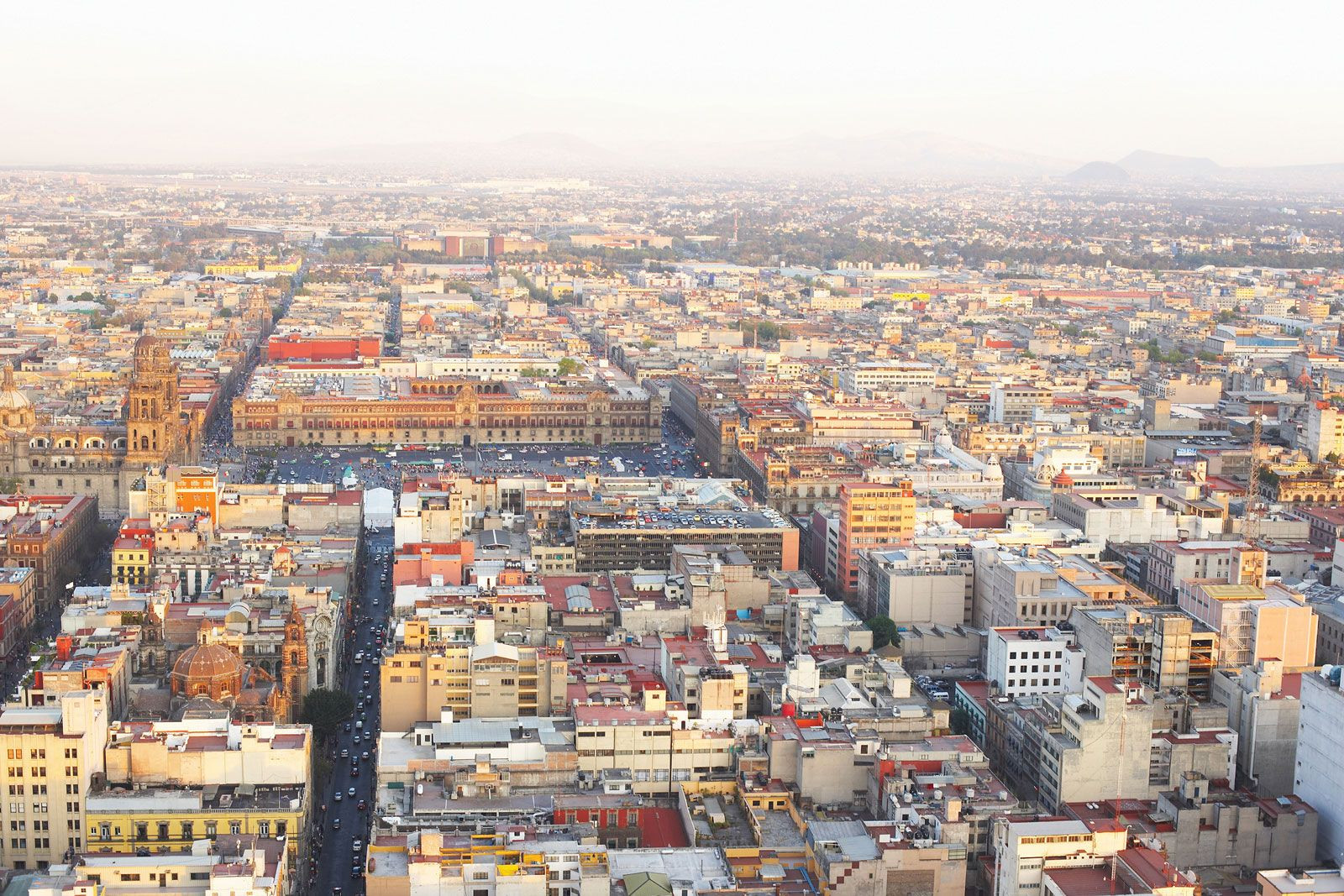Mexico City, a sprawling metropolis, stands as a pivotal center in North America. But where is Mexico City exactly? This article delves into the geographical heart of this vibrant capital, exploring its location, historical significance, and the unique characteristics that make it a city of global importance.
Geographic Location and Setting of Mexico City
Mexico City is nestled within the Valley of Mexico, also known as the Mesa Central. This high plateau dominates the geography of central Mexico. Surrounded on three sides by the State of Mexico, the city’s official designation is Mexico City, Distrito Federal (Federal District), or Ciudad de México. To pinpoint its location more precisely, Mexico City lies in the south-central part of the country.
Historically, the Valley of Mexico was a basin dotted with several large lakes. The name Anáhuac, derived from Nahuatl meaning “Close to the Water,” reflects this watery past. While these lakes have largely been drained over centuries, their legacy profoundly shapes the city’s unique environment and ongoing challenges, such as its sinking land and earthquake vulnerability. Understanding where Mexico City is geographically is crucial to grasping its development and character.
 Panoramic view of central Mexico City
Panoramic view of central Mexico City
Historical Significance and Origins in the Valley
The location of Mexico City is not just a matter of coordinates; it’s deeply intertwined with its rich history. The city’s origins trace back to Tenochtitlán, the magnificent island capital of the Aztec Empire. Founded in 1325, Tenochtitlán thrived in the valley’s lake system. In 1521, after conquering the Aztecs, Spanish conquistadors, led by Hernán Cortés, made a decisive choice: they established Mexico City directly atop the ruins of Tenochtitlán.
This act of building a new capital on the foundations of the old was symbolic and practical. It cemented Spanish dominance while leveraging the existing infrastructure and strategic location of the Aztec capital. Mexico City then became the capital of New Spain, and continued as the capital after Mexico gained independence in 1821. Therefore, where Mexico City is today is a place layered with centuries of history, from its pre-Hispanic roots to its colonial and modern incarnations.
 Mexico City: Zócalo, Metropolitan Cathedral, National Palace
Mexico City: Zócalo, Metropolitan Cathedral, National Palace
Modern Significance and Importance of its Central Location
Mexico City’s central location within Mexico has been paramount to its growth and importance. It stands as one of the most vital political, cultural, educational, and financial centers in North America. Its highland location has naturally positioned it as a crossroads for trade routes connecting diverse regions of Mexico. From ancient footpaths to modern highways, all transportation arteries have historically converged on Mexico City, solidifying its central role.
This centrality has attracted people from across Mexico seeking opportunities, safety, and access to amenities. Consequently, Mexico City has become a megacity, with its metropolitan area encompassing a significant portion of the nation’s population and wealth. Knowing where Mexico City is helps to understand its role as a national and continental hub.
Character and Contrasts in a Metropolitan Setting
Mexico City presents a fascinating study in contrasts, a dynamic metropolis grappling with rapid growth and rich heritage. While some observers have focused on its challenges, labeling it a city of “underdevelopment” or a “monster out of control,” it is undeniably a vibrant home to millions. Its character is shaped by a blend of bustling avenues, diverse neighborhoods (colonias), and strong community networks.
The city juxtaposes modern skyscrapers with colonial-era churches and pre-Hispanic ruins. Chapultepec Castle stands as a testament to history, while modern structures like the Torre Latinoamericana exemplify its contemporary aspirations. Traditional markets thrive alongside modern supermarkets, showcasing the city’s layered identity. The very ground where Mexico City is located, built upon the drained lakebed, contributes to its unique and sometimes precarious urban landscape.
 Aerial view of Mexico City
Aerial view of Mexico City
Conclusion: Mexico City’s Enduring Presence
In conclusion, where Mexico City is is far more than just a point on a map. It is a location imbued with historical depth, geographical significance, and immense contemporary relevance. From its origins as the Aztec capital Tenochtitlán to its current status as a North American megacity, Mexico City’s location in the Valley of Mexico has been central to its identity and development. Understanding its geographical context is key to appreciating the complexities and enduring allure of this remarkable capital.

